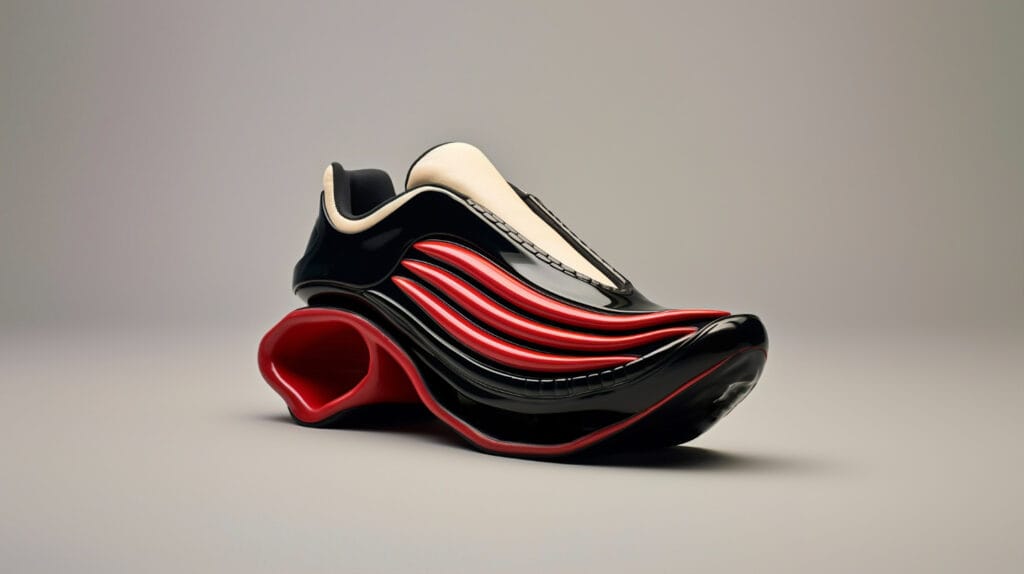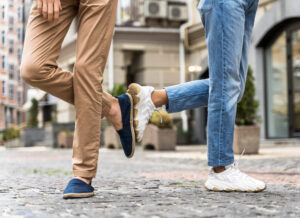When it comes to strange rules and myths, few topics stir up more confusion than what we wear on our feet—whether it’s on the track or behind the wheel. From the controversy over illegal running shoes in pro sports to the age-old debate of whether it’s okay to drive barefoot, many of us are left wondering: what’s actually illegal, and what’s just misunderstood?
In this blog, we’re diving into both topics—illegal running shoes and the question: is driving without shoes illegal? We’ll break down where these laws and misconceptions come from, and what they really mean for your everyday life.
Table of Contents
What Are Illegal Running Shoes?
The term “illegal running shoes” may sound absurd at first—how can a shoe be illegal? But in the world of professional athletics, especially track and road racing, some shoes have been banned for providing what many believe to be an unfair competitive advantage.
The controversy first erupted with the release of Nike’s Vaporfly and Alphafly models. These high-tech shoes featured:
- A carbon-fiber plate embedded in the sole,
- ZoomX foam for maximum energy return, and
- Exceptionally lightweight materials.
These innovations led to significant performance gains, so much so that they helped runners break world records. In response, World Athletics (the governing body for track and field) imposed new regulations on footwear used in sanctioned races.
According to current rules:
- The sole thickness must not exceed 40 mm.
- Shoes must have been available to the public for at least 4 months.
- Only one rigid plate is allowed in the midsole.
Any shoe that doesn’t meet these criteria may be considered illegal for running shoes in competition. However, they’re still perfectly legal for casual use or personal training.

Why Are Some Running Shoes Banned?
The main reason? Fairness.
The carbon-fiber plate and highly responsive foam used in certain shoes can reportedly reduce energy loss by 4% or more. That’s huge in elite racing terms. For example, a runner who previously clocked a marathon at 2:05 could theoretically improve by nearly two minutes without changing their training, just by switching shoes.
Critics argue that this creates a technology gap between sponsored and non-sponsored athletes, which defeats the principle of equal competition. Hence, the term “illegal running shoes” was born—not because they violate national laws, but because they violate sports regulations.
Is Driving Without Shoes Illegal?
Now shifting gears—literally—let’s tackle another common question: Is driving without shoes illegal?
The short answer: No, driving barefoot is not illegal in most countries, including the United States, the United Kingdom, Canada, and Australia.
However, that doesn’t mean it’s always recommended or risk-free. Some driving authorities discourage barefoot driving because it could reduce your ability to operate the pedals effectively, especially in emergencies.
Why Is It Illegal to Drive Without Shoes? (Or Is It?)
Let’s clear this up: There is no specific law in most regions that says it is illegal to drive without shoes. But the confusion stems from something else: general traffic safety laws.
In many countries, you can be fined if your method of driving is deemed unsafe or negligent. So, if driving barefoot contributes to:
- Delayed reaction time,
- Slipping off the brake or gas pedal,
- Or causing an accident,
Then, a police officer might cite you under broader laws like “driving without due care and attention” or “negligent driving.”
In that case, it’s not about the bare feet—it’s about the lack of control and the risk of endangering others.
So while driving barefoot isn’t technically illegal, it could still land you in hot water if it leads to an accident.
Flip-Flops, Heels, and Other Dangerous Footwear
If we’re being honest, driving barefoot may actually be safer than wearing some types of shoes. Here’s why:
- Flip-flops can easily get caught under the pedals.
- High heels elevate your foot, reducing pedal feel and increasing the risk of slipping.
- Loose sandals can slide off mid-drive and get stuck.
Driving in these kinds of shoes may be riskier than driving without any shoes at all. That said, the safest option is to always wear flat, closed-toe shoes with a good grip while driving.
Connecting the Dots: Footwear Rules Everywhere
Let’s pause for a second and connect both of our focus areas: illegal running shoes and barefoot driving.
What’s the common thread?
👉 Footwear matters and different rules apply depending on the context.
- In professional sports, your shoes could literally disqualify you from a race if they’re deemed “illegal.”
- In daily driving, poor footwear choices or no shoes at all could potentially lead to an accident, and then legal consequences.
In both cases, it comes down to performance, safety, and fair play.

Tips for Staying Legal and Safe
Whether you’re running a marathon or heading out for a grocery run, here are a few tips to avoid trouble:
✅ Runners: If you’re competitive, check the World Athletics shoe regulations before entering races. Avoid using prototypes or thick-soled shoes that exceed legal limits.
✅ Drivers: Keep a pair of safe driving shoes in your car if you like wearing sandals, heels, or going barefoot. This small habit could make a huge difference in emergencies.
✅ Casual Users: Don’t worry—“illegal running shoes” are only illegal in certain competitions. You can still use them for workouts, training, or everyday activities.
Final Thoughts
To recap:
- Illegal running shoes aren’t banned by governments—they’re banned in professional sports for giving athletes an unfair edge.
- Is it illegal to drive without shoes? No, but it can be risky if it affects your car control.
- Why is it illegal to drive without shoes? Technically, it isn’t, but if your lack of footwear leads to unsafe driving, that’s where the law might catch up with you.
- Is driving without shoes illegal? Only if it compromises your driving safety.
So, whether you’re pounding the pavement or hitting the gas, remember: your choice of shoes isn’t just a style decision—it can impact your performance, safety, and legality.
Just like finding affordable watches for men that combine style and function, choosing the right footwear, whether it’s for running or driving, can make a big difference in your performance and safety. From illegal running shoes in professional sports to the myths surrounding barefoot driving, it’s clear that the choices we make about what’s on our feet matter. So, whether you’re looking for the perfect pair of sneakers or the ideal watch, it’s always about balance: finding something that fits your needs, keeps you safe, and helps you perform at your best.




